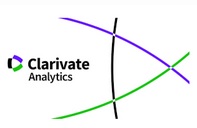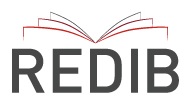Detection of Muscle Dysmorphia symptoms in male weightlifters
Abstract
Muscle dysmorphia (MD) is a body dismorphic disorder in which the sufferer is dissatisfied with their body size and shape. MD has yet to be studied in weightlifters, and the objective of this research study is to detect its symptoms in 32 male weightlifters as well as any related characteristics and behaviours. This study involved the distribution of a sociodemographic questionnaire in addition to the Escala de Satisfacción Muscular, the Physical Self-Concept Questionnaire, and the Somatomorphic Matrix, with the anthropometric measurements of the participants also being recorded. The results revealed the existence of body dissatisfaction among athletes and, in some cases, muscle perception that does not equate to reality. The athletes also use substances to build their muscles and enhance their performance, display obsessive muscle checking behaviours, and have low general physical self-concept that stems from their muscle (dis)satisfaction. To conclude, this study confirms the existence of MD in this sport.
Downloads
References
Alfano, L., Hildebrant, T., Bannon, K., Walker, C., & Walton, K. E. (2011). The impact of gender on the assessment of body checking behavior. Body Image, 8, 20-25. doi: 10.1016/j.bodyim.2010.09.005
American Psychiatric Association (2014). Manual diagnostic y estadístico de los trastornos mentales (DSM-5). [Diagnostic and Statistical Manual of Mental Disorders (DSM-5)]. 5ª Ed. Arlington, VA, Asociación Americana de Psiquiatría.
Arbinaga, F. (2005). Varones noveles en el entrenamiento de musculación: un estudio piloto sobre ansiedad física social [Novice male body building training: a pilot study on social physical anxiety]. Kronos, 7, 33-11.
Arbinaga, F., & Caracuel, J. C. (2005). Precompetición y Ansiedad en Fisicoculturistas [Precompetition and Anxiety in Bodybuilders]. Revista de Psicología del Deporte, 14(2), 195-208.
Babusa, B., Urbán, R., Czeglédi, E., & Túry, F. (2012). Psychometric properties and construct validity of the Muscle Appearance Satisfaction Scale among Hungarian men. Body Image, 9, 155–162. doi: 10.1016/j.bodyim.2011.08.005
Baghurst, T., & Lirgg, C. (2009). Characteristics of muscle dysmorphia in male football, weight training, and competitive natural and non-natural bodybuilding samples. Body Image, 6, 221–227. doi: 10.1016/j.bodyim.2009.03.002
Cafri, G., & Thompson, K. J. (2004). Measuring Male body image: A Review of the Current Methodology. Psychology of the Men and Masculinity, 5(1), 18-29. doi: 10.1037/1524-9220.5.1.18
Cafri, G., Van der Berg, P., & Thompson, J. K. (2006). Pursuit of Muscularity in Adolescent Boys: Relations among biopsychosocial variables and clinical outcomes. Journal of Clinical Child and Adolescent Psychology, 35(2), 283-291. doi: 10.1207/s15374424jccp3502_12
Cohane, G. H., & Pope, H. G. (2000). Body Image in Boys: A Review of the Literature. International Journal of Eating Disorders, 29, 373-379. doi: 10.1002/eat.1033
Esco, M. R., Olson, M. S., & Williford, H. N. (2005). Muscle Dysmorphia: An Emerging Body Image Concern in Men. National Strength and Conditioning Association, 27(6), 76-79. doi: 10.1519/00126548-200512000-00012
Fernández, J. G., Contreras, O. R., González, I., & Abellán, J. (2011). El autoconcepto físico en Educación Secundaria. Diferencias en función del género y la edad [Physical self-concept in secondary education. Differences relation on the gender and age]. Revista Galego-Portuguesa de Psicoloxía e Educación, 19(1), 199-212.
Fox, K., & Corbin, C. (1989). The physical self and processes in self-steem development. In Fox (Ed.), The physical self. From motivation to well-being. Champaign: Human Kinetics.
González-Martí, I. (2012). Elementos que integran el perfil de la persona afectada por Dismorfia Muscular (Vigorexia). Prevalencia del trastorno en fisicoculturistas y usuarios de la sala de musculación [Elements to take part in the profile of a person affected with Muscle Dysmorphia (Bigorexia). Prevalence of disorder in bodybuilders and weightlifters users gym] (Tesis doctoral inédita). Universidad de Castilla-La Mancha, Cuenca.
González-Martí, I., Fernández, J. G., & Contreras, O. R. (2012). Contribución para el criterio diagnóstico de la Dismorfia Muscular (Vigorexia) [Contribution to the diagnosis criterion of muscle Dysmorphia (Bigorexia)]. Revista de Psicología del Deporte, 21(2), 351-358.
González-Martí, I., Fernández, J. G., Contreras, O. R., & Mayville, S. B. (2012). Validation of a Spanish version of the Muscle Appearance Satisfaction Scale: Escala de Satisfacción Muscular. Body Image, 9, 517-523. doi: 10.1016/j.bodyim.2012.05.002
González-Martí, I., Fernández, J. G., Hernández-Martínez, A., & Contreras, O. R. (2014). Physical perceptions and self-concept in athletes with muscle dysmorphia symptoms. The Spanish Journal of Psychology, 17(43), 1-7.
Goñi, A., Ruíz de Azúa, S., & Liberal, A. (2004). El autoconcepto físico y su medida. Las propiedades psicométricas de un nuevo cuestionario [Physical self-concept and their assessment. The psychometrics properties of a new questionnaire]. Revista de Psicología del Deporte, 13(2), 195-213. Recovered from http://ddd.uab.cat/pub/revpsidep/19885636v13n2p195.pdf
Grammas, D. L., & Schwartz, J. P. (2009). Internalization of messages from society and perfectionism as predictor of male body image. Body Image, 6, 31-36. doi: 10.1016/j.bodyim.2008.10.002
Gruber, A. J., Pope, H. G., Borowiecki, J., & Cohane, G. (1999). The development of the Somatomorphic matrix: A bi-axial instrument for measuring body image in men and women. In T. S. Olds, J. Dollman, & K. I. Norton (Eds.), Kinanthropometry VI. Sydney: International Society for the Advancement of Kinanthropometry.
Hale, B. D., Roth, A. D., Delong, R. E., & Briggs, M. S. (2010). Exercise dependence and the drive for muscularity in male bodybuilders, power lifters, and fitness lifters. Body Image, 7, 234-239. doi: 10.1016/j.bodyim.2010.02.001
Jackson, A., & Pollock, M. (1978). Generalized equations for predicting body density in man. British Journal Nutrition, 40, 497-504.
Kelly, C. C., Neufeld, J. M., & Musher-Eizenman, D. (2010). Drive for thinness and drive for muscularity: Opposite ends of the continuum or separate constructs?. Body Image, 7, 74-77. doi: 10.1016/j.bodyim.2009.09.008
Kouri, E., Pope, H., Katz, D., & Oliva, P. (1995). Fat-Free Mass index in Users and Nonusers of Anabolic-Androgenic. Clinical Journal of Sports Medicine, 5, 223-228. doi: 10.1097/00042752-199510000-00003
Marfell-Jones, M., Olds, T., Stewart, A., & Carter, L. (2006). International Standards for Anthropometric Assessment. ISAK: Potchefstroom, South Africa.
Meesters, C., Muris, P., Hoefnagels, C., & Van Gemert, M. (2007). Social and family correlates of eating problems and muscle preoccupation in Young adolescents. Eating Behaviors, 8, 83-90. doi: 10.1016/j.eatbeh. 2006.02.002
Menees, L. M. (2010). Examining the Relationship between Criticism and Muscle Dysmorphia Symptomotology in Collegiate Men. Master Theses and Specialist Projects. Paper, 179. Recovered from http://digitalcommons.wku.edu/theses/179.
Moreno, R., Moreno, J. A., & Cervelló, E. (2009). Relación del autoconcepto físico con las conductas de consumo de alcohol y tabaco en jóvenes adolescentes [Relationship of physical self-concept with the behaviours of alcohol and tobacco in adolescent girls]. Adicciones, 21(2), 147-154.
Murray, S. B., Rieger, E., Hildebrant, T., Karlov, L., Rusell, J., Boon, E., Dawson, R. T., & Touyz, S.W. (2012). A comparison of eating, exercise, shape, and weight related symptomatology in males with muscle dysmorphia and anorexia nervosa. Body Image, 9, 193-200. doi: 10.1016/j.bodyim.2012.01.008
Ochner, C. N., Gray, J. A., & Brickner, K. (2009). The development and initial validation of a new measure of male body dissatisfaction. Eating Behaviors, 10, 197-201. doi: 10.1016/j.eatbeh.2009.06.002
Pope, H. G., Phillips, K., & Olivardia, R. (2000). The Adonis Complex. How to Identify, Treat, and Prevent Body obsession in Men and Boys. New York. A Touchstones Book.
Ruíz de Azúa, S., Goñi, A., & Rodríguez, A. (2005). Variables socioculturales en la construcción del autoconcepto físico [Sociocultural variables in the construction of physical self-concept.]. Cultura y Educación, 17(3), 225-338.
Sokolova, M. V., González-Martí, I., Contreras, O. R., & Fernández, J. G., (2013). A Case Study of Muscle Dysmorphia Disorder Diagnostics. Expert Systems with Applications, 40, 4226-4231. doi: 10.1016/j.eswa.2013.01.023
Urpadilleta, I., Aspalov, D., Masse, L., & Docteur, A. (2010). Use of a picture distortion technique to examine perceptive and ideal body image in male and female competitive swimmers. Psychology of Sport and Exercise, 11, 568-573.
Walker, C., Andreson, D. A., & Hildebrandt, T. (2009). Body checking behaviors in men. Body Image, 6, 164-170. doi: 10.1016/j.bodyim.2009.05.001
Wilson, S. A. (2010). The Effects of Picture Presentation on Male Body Shame and Muscle Dysmorphia. Master Theses and Specialist Projects. Papers, 141. Recovered from http://digitalcommons.wku.edu/theses/141.
Wolke, D., & Saupona, M. (2008). Big men feeling small: Childhood bullying experience, muscle dysmorphia and other mental health problems in bodybuilders. Psychology of Sport and Exercise, 9, 595–604. doi: 10.1016/j.psychsport.2007.10.002
The works published in this journal are subject to the following terms:
1. The Publications Service of the University of Murcia (the publisher) retains the property rights (copyright) of published works, and encourages and enables the reuse of the same under the license specified in paragraph 2.
© Servicio de Publicaciones, Universidad de Murcia, 2022
2. The works are published in the online edition of the journal under a Creative Commons Reconocimiento-CompartirIgual 4.0 (legal text). You can copy, use, distribute, transmit and publicly display, provided that: i) you cite the author and the original source of publication (journal, editorial and URL of the work), ii) are not used for commercial purposes, iii ) mentions the existence and specifications of this license.
This work is licensed under a Creative Commons Attribution-ShareAlike 4.0 International License.
3. Conditions of self-archiving. Is allowed and encouraged the authors to disseminate electronically pre-print versions (version before being evaluated and sent to the journal) and / or post-print (version reviewed and accepted for publication) of their works before publication, as it encourages its earliest circulation and diffusion and thus a possible increase in its citation and scope between the academic community. RoMEO Color: Green.















